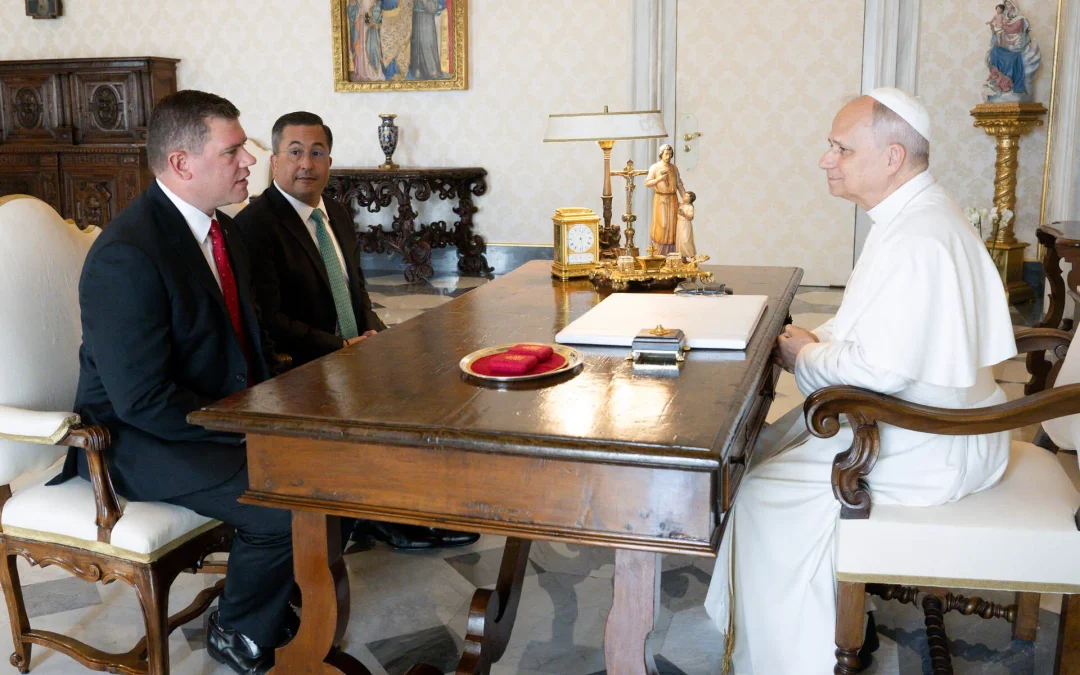We all know that a great story can be one of the most effective ways to build up a child’s faith and strengthen their relationship with our Lord and His church. Many Catholic authors I know, including myself, strive to tell stories that will echo in your child’s heart beyond their early years. The storyteller has an awesome opportunity and responsibility.
So, who is the best Catholic storyteller?
I’m sure you can think of many wonderful stories and the many names of the gifted writers who told them. Names we’d all be familiar with. Names we’d see on the spines of well-worn books that rest on our children’s shelves. But no matter how beloved these writers might be, none are more beloved than the two names I have in mind. And I almost guarantee these two names are not among those you have in mind. And yet you know them, and know them well.
I contend, no writer, no matter how hard we might strive or aspire to be the best, will ever be as good a storyteller as the two who go by the names: Mommy and Daddy.
It may seem a little far-fetched that an ordinary mom or dad could be a better storyteller than the celebrated authors you see on the bestsellers list. But the truth is every story is better within the context of a good relationship. Good relationships create emotional connections and that makes storytelling way more effective. It’s something we writers work hard to achieve in our writing but it’s something you’ve achieved with out even getting out of bed.
And what’s more, oral storytelling engages an audience more deeply than reading from a book or even being read to. The words take on a new life; the life of the speaker. They are now your thoughts, and if your audience knows you as mommy or daddy, the words carry special authority and credibility.
If you’re still skeptical and doubt you have these hidden super powers, consider these points below. You’ll see how far ahead in the storytelling game you already are with out even trying.
4 Essentials For Great Faith-building Storytelling
Great storytelling starts by getting the audience’s attention.
This may seem obvious, but if you can’t get someone’s attention quickly, your story may never get off the ground. But you don’t have to worry about that like we writers do. All you have to do is flop on the couch for a moments rest, and kids will fly to you like you’re an open piñata. Getting their attention is easy.
Great storytelling always seems personal.
Great storytelling depends on knowing your audience and you know your children better than any writer ever will. You know how to make them laugh. You know what they like, and dislike. You know what makes them worry and how to console them. These are the kinds of intimate details you can use to make a story more engaging, memorable, or just more fun. (Pro tip example: If you tell the story of King David dancing before the Lord in 2 Samuel, bust out the embarrassing dance moves you’ve been forbidden to do in front of your child’s friends.)
Great storytelling keeps the audience engaged.
The most talented storytellers work hard to craft their story so the audience feels it is an important or relevant matter they should pay attention to. A parent merely speaks and it’s immediately important and relevant to a child. Kids want to listen to what a parent has to say for a lot of reasons; to please you, they trust you to tell them important things, they like being included in the conversation, plus, they just love spending time with you.
Great storytelling is believable.
This is particularly important to faith-building storytelling. Our salvation history and our relationship to Jesus is one big unbelievable story. It’s so radical and crazy at times a kid naturally has to wonder if it’s true. When a parent says something is true, it’s true. No book can compete with the parent stamp of approval.
Tips To Improve Your Storytelling Abilities
So you see you already have a lot to build on. Here are few suggestions that might be helpful in developing your newly discovered super powers as a storyteller.
You don’t need to deliver a PhD level exegesis, or even know how to pronounce that word correctly, to tell an effective faith-building story. The important thing to remember is regardless of the depth of your knowledge, they will come to love what, or who, you love. The very act of sharing stories about our faith and our God signals very clearly to children that your are talking about something or someone you care for. So don’t worry about being perfect. Remember this isn’t a performance. It’s an opportunity to build a stronger relationship between you, your child and God.
A story doesn’t need to be long. It might be if there is a story you particularly love and are familiar with, but a short comment on something you and your child just read or heard at mass, can make a powerful impression as well.
Use personal anecdotes, humor, or their language. Telling stories in a way that makes your little audience comfortable is more engaging, understandable, relevant, and current. It helps the stories come to life, their life. An adage worth remembering is; it’s not what you say, it’s what they hear.
Tell stories you’re excited about. Natural excitement makes any audience lean in and listen. Excitement is infectious. So is joy. We get excited and happy about things that are meaningful to us. Kids sense that, and they’re more likely to think it’s meaningful to them.
If there is a way to relate the story to yourself, your child will most certainly be captivated by the story. Kids love to hear about their parent’s lives, especially as kids. You can also turn the story around to them. Ask how they’d feel if ‘that’ happened to them.
Don’t be afraid to be entertaining. When it comes to faith building we can sometimes be a bit stodgy. Entertaining is engaging, and the more engaged an audience the more likely they are to remember the story. Be silly if that’s who you are. Being silly can be a wonderful counterpoint to a more dramatic moment in a story. I do it all the time when I write and/or illustrate. Which leads me to my next point…
Be prepared to embarrass yourself (something I also do all the time). Kids love it when parents do something embarrassing like the David dance move mentioned earlier, or mispronounce a name like “Mahershalalhashbaz” from Isaiah 8:1, or use a go-to silly French accent for everyone in the Bible including the King of Egypt when talking to Moses. You’re creating great fun and making the story way more memorable.
Look at the audience and see what they’re feeling and react. If something is really funny- spend a little more time there and enjoy the fun ride. If they look quizzical, spend more time explaining. Be adaptable. If the audience really wants to go in another direction than what you had in mind, be flexible and explore what they want.
Let them join in the storytelling. Encourage them to participate with their take on the story. Being invested, and having ownership always makes things more important and memorable.
Sometimes the Bible is sparse on detail, so fill in the blanks that might help your audience understand the situation more. You may need to point out the emotion someone may have felt or that something is funny.
Similarly you may need to set the context. For example, you may need to explain that it was hard for the locals in Jesus’ hometown to think of him as the messiah because they all knew him as the little kid who would run around and help his carpenter dad out.
Let your personality shine. Don’t force a performance. They love you an and they love that you’re spending time with them with something that’s important to you. Plus, kids can sense a phony. Be genuine. You may not think you’re being the best storyteller, but I know you are in that moment with your son or daughter.
Our faith flourished long before any book, including the Bible itself, was ever printed. Oral storytelling was all they had back then, but it seems to have worked very well, and there is no reason why it won’t work now. We just need to try. I’m certain if you do, not only will you become the best faith-building Catholic storyteller your kids have ever known, they will grow to love our Lord as much as you do. Wouldn’t that be a great story!
Looking For A Great Catholic Story To Share With Your Child?
Inspired by the parable of the Good Shepherd, who goes into the wilderness to rescue the sheep that strays, this tale of faith and forgiveness is sure to inspire greater love and devotion for the kindly Shepherd, who is always ready to find us and lead us home.
With whimsical storytelling and colorful imagery, this picture book gently introduces children to the challenge all Christians face during their lives. Parents and children alike will ask whether they have the courage to follow Jesus when the path before them becomes steep and rocky.













